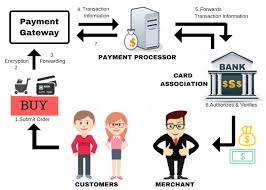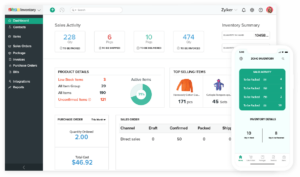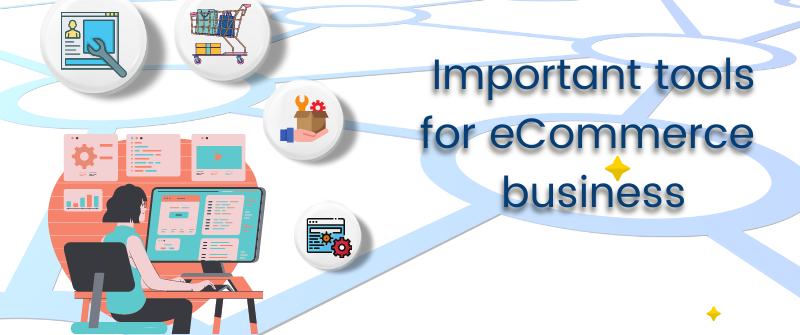The world of e-commerce is a dynamic and ever-evolving landscape, where staying ahead of the curve can be the difference between success and failure. With the rise of online shopping, the African market is no exception, and entrepreneurs are now more than ever, looking for innovative ways to boost their online stores and compete with the big players. But, with so many options available, it can be overwhelming to navigate the vast array of tools and resources that claim to supercharge your online store. That’s where this insider guide comes in – a comprehensive roadmap to the top e-commerce tools and resources that will take your online store to the next level. From payment gateways to marketing automation, and from inventory management to customer service, we’ll dive into the must-haves and nice-to-haves that will help you increase sales, streamline operations, and build a loyal customer base in the African market.
-
Payment Gateways and Transaction Processing

When it comes to running a successful e-commerce store, one of the most critical components is the ability to process transactions smoothly and securely. This is where payment gateways and transaction processing tools come in. A payment gateway is the backbone of your online store, allowing customers to pay for their purchases online. With the right payment gateway, you can reduce cart abandonment rates, increase conversions, and provide a seamless checkout experience for your customers.
Payment gateways: The secure bridge
Think of a payment gateway as a secure bridge between your online store and your customer’s bank. Here’s how it works:
Customer checkout: Once a customer selects their payment method (credit card, debit card, etc.) at your e-commerce checkout, their information is sent to the payment gateway.
Encrypted transmission: The payment gateway securely encrypts the customer’s sensitive financial data to protect it from prying eyes.
Verification and authorization: The gateway transmits the encrypted data to the customer’s issuing bank for verification and authorization.
Response to merchant: The issuing bank sends an authorization response back to the payment gateway, indicating whether the transaction is approved or declined.
Payment completion: If approved, the gateway facilitates the transfer of funds from the customer’s account to yours (through the merchant acquirer).
Popular payment gateway options
Paystack: A prominent African-focused gateway known for its user-friendly platform, competitive fees, and support for various payment methods, including credit/debit cards, mobile money, and bank transfers.
Flutterwave: Another major player, Flutterwave offers a comprehensive suite of payment solutions for businesses operating across Africa. It supports various payment methods and integrates with popular e-commerce platforms.
Interswitch: A Nigerian giant, Interswitch provides a robust payment infrastructure, including its Verve card network and Quickteller platform for bill payments and money transfers.
VoguePay: A Pan-African gateway solution supporting multiple currencies and popular with businesses across the continent.
Mobile money: Unlike many developed regions, mobile money plays a dominant role in African e-commerce transactions. Gateways like M-Pesa (Kenya), MTN Mobile Money (various countries), and Airtel Money (various countries) are crucial for reaching a large portion of the unbanked population in Africa.
Transaction processing: Behind the scenes
While payment gateways handle the customer-facing portion, transaction processing involves additional actors:
Merchant acquirer: A financial institution that partners with your business to process credit and debit card transactions. They handle settlement with the issuing bank and deposit the funds into your merchant account.
Payment processor: This company provides the infrastructure and technology to facilitate the entire transaction flow, including authorization, settlement, and risk management. Some payment gateways (like PayPal) also function as processors.
Card networks: Networks like Visa, Mastercard, and American Express manage the authorization process and communication between issuing and acquiring banks.
Choosing the right payment gateway and processing solution
Several factors influence your choice:
Transaction fees: Payment gateways and processors typically charge per-transaction fees and may have additional monthly charges. Compare pricing models and choose the one that best suits your volume and budget.
Security features: Ensure the gateway offers robust security measures like PCI compliance and data encryption to protect customer information.
Supported payment methods: Choose a gateway that supports the payment methods most popular with your target audience (credit cards, debit cards, mobile wallets, etc.).
Ease of integration: A seamless integration with your e-commerce platform is essential for a smooth checkout experience.
Building trust and security
Payment gateways and processors play a crucial role in building customer trust. Here’s how:
Secure transactions: By offering secure payment processing, you assure customers that their financial information is protected.
Fraud prevention: Most gateways and processors employ advanced fraud prevention tools to minimize the risk of fraudulent transactions.
Dispute resolution: These services offer support for resolving disputes or chargebacks, ensuring a smoother transaction flow for both you and your customers.
-
Marketing automation and customer acquisition

As an e-commerce entrepreneur, you know that acquiring new customers and retaining existing ones is crucial to the success of your online store. However, managing multiple marketing campaigns and keeping track of customer interactions can be a daunting task, especially as your business grows. This is where marketing automation and customer acquisition tools come in. With the right tools, you can streamline your marketing efforts, personalize your customer interactions, and ultimately drive more sales and revenue. Imagine being able to automate email campaigns, social media posts, and ad targeting to reach your target audience with precision and accuracy. Imagine having a 360-degree view of your customers’ behavior, preferences, and purchase history, allowing you to tailor your marketing messages and offers to their individual needs. With the top e-commerce tools and resources in this category, you can achieve just that. We’ll explore the best solutions to help you supercharge your online store and take your customer relationships to the next level.
Marketing automation: Efficiency and personalization
Marketing automation platforms allow you to automate repetitive marketing tasks, saving you time and resources while personalizing the customer journey. Here’s what they offer:
Email marketing automation: Create targeted email campaigns based on customer behavior and preferences. Trigger automated email sequences based on specific actions (e.g., abandoned cart, welcome email series). Popular options include: Mailchimp, Constant contact, Klaviyo (e-commerce focused)
Social media scheduling: Schedule and publish social media posts across various platforms in advance, maintaining brand consistency and saving time.
Landing page creation: Build high-converting landing pages to capture leads and promote specific products or campaigns.
Segmentation and targeting: Segment your customer base based on demographics, purchase history, and interests to deliver personalized marketing messages that resonate with each audience segment.
Customer acquisition tools: Reaching your target audience
Beyond automation, these tools help you attract new customers and expand your reach:
Search Engine Optimization (SEO) tools: Improve your website’s search engine ranking for relevant keywords to drive organic traffic. Tools like SEMrush or Ahrefs help with keyword research, competitor analysis, and on-page optimization.
Pay-Per-Click (PPC) advertising: Run targeted ad campaigns on platforms like Google Ads or social media platforms to reach new customers actively searching for products like yours.
Affiliate marketing: Partner with other businesses or influencers to promote your products and earn commissions on sales generated through their referrals. Popular platforms include ShareASale or CJ Affiliate.
Retargeting Ads: Capture the interest of website visitors who haven’t converted yet by showing them targeted ads across other websites they visit.
Choosing the right tools for your needs
The best marketing automation and customer acquisition tools for your business will depend on factors like:
Budget: A variety of free and paid options exist. Start with free tools or basic plans and scale up as your business grows.
Marketing expertise: If you’re new to marketing automation, consider user-friendly platforms with robust support resources.
Business goals: Align your chosen tools with your specific goals. Whether it’s brand awareness, lead generation, or driving sales, choose tools that cater to those objectives.
The power of integration
For optimal results, ensure your marketing automation platform integrates seamlessly with your e-commerce platform and other business tools (e.g., CRM, analytics). This allows for a unified data flow and a more holistic view of your marketing efforts.
Embrace data-driven marketing
Leverage analytics features within your marketing automation platform to track campaign performance, identify what’s working, and optimize your strategies for better results. A/B testing allows you to compare different versions of emails, landing pages, or ad creatives to see which ones perform best.
Building customer relationships
Marketing automation isn’t just about sending emails and ads. Use these tools to nurture relationships with potential and existing customers. Send personalized birthday offers, re-engagement campaigns to win back inactive customers, or loyalty programs to reward repeat buyers.
-
Inventory management and order fulfillment
 As your online store grows, managing inventory and fulfilling orders can quickly become a daunting task. Imagine having to manually track stock levels, update product quantities, and ship orders one by one – it’s a recipe for disaster. But, with the right tools and resources, you can streamline your inventory management and order fulfillment processes, freeing up valuable time to focus on growing your business. From automated inventory tracking software to shipping integrations that simplify order fulfillment, the right tools can help you stay on top of your inventory, reduce errors, and get products to customers faster. With the ability to track stock levels in real-time, set automatic reorder points, and print shipping labels with ease, you’ll be able to provide a seamless customer experience, while also reducing the stress and hassle associated with inventory management. In this section, we’ll dive into the top e-commerce tools and resources for inventory management and order fulfillment, helping you to supercharge your online store and take your business to the next level.
As your online store grows, managing inventory and fulfilling orders can quickly become a daunting task. Imagine having to manually track stock levels, update product quantities, and ship orders one by one – it’s a recipe for disaster. But, with the right tools and resources, you can streamline your inventory management and order fulfillment processes, freeing up valuable time to focus on growing your business. From automated inventory tracking software to shipping integrations that simplify order fulfillment, the right tools can help you stay on top of your inventory, reduce errors, and get products to customers faster. With the ability to track stock levels in real-time, set automatic reorder points, and print shipping labels with ease, you’ll be able to provide a seamless customer experience, while also reducing the stress and hassle associated with inventory management. In this section, we’ll dive into the top e-commerce tools and resources for inventory management and order fulfillment, helping you to supercharge your online store and take your business to the next level.
Inventory management systems (IMS): Gaining control of your stock
An IMS acts as the central nervous system of your inventory. Here’s what it can do for you:
Real-time inventory tracking: Gain instant visibility into your stock levels across multiple locations (if applicable) to avoid overselling and ensure you have enough product to meet demand. Popular options include: Skubana, Zoho Inventory, Orderhive
Automated reordering: Set reorder points for your products to automatically trigger purchase orders when inventory dips below a certain level, preventing stockouts.
Inventory forecasting: Some advanced IMS use historical sales data and seasonality trends to forecast future demand, helping you optimize your inventory levels and avoid overstocking.
Warehouse management systems (WMS): Optimizing storage and picking
For businesses with larger warehouses or complex picking processes, a WMS can be a game-changer. A WMS:
Optimizes warehouse layout: Map your warehouse for efficient product placement, minimizing picking times.
Streamlines picking and packing: Generate pick lists and packing slips that guide warehouse staff through the picking and packing process, reducing errors and improving order fulfillment speed.
Inventory management integration: Seamlessly integrates with your IMS for real-time stock level updates and synchronized data. Popular WMS options include: Fishbowl, Shipstation warehouse, Delivrd
Order fulfillment services: Outsource the heavy lifting (Optional)
If managing your own warehouse and fulfillment process seems daunting, consider outsourcing to a third-party fulfillment service (3PL). A 3PL will:
Store your inventory: Store your products in their warehouses, freeing up your space and resources.
Pick, Pack, and Ship orders: Handle the entire order fulfillment process, from picking and packing to shipping your orders.
Scalability: Offer greater scalability, allowing you to handle increased order volume without significant upfront investment in warehouse space and staff. Popular 3PL options include: Fulfillment by Amazon (FBA), ShipBob, Rakuten Super Logistics
Choosing the right tools for your needs
The best inventory management and order fulfillment tools for your business will depend on several factors, including:
Business size and order volume: A small business with low order volume may only need a basic IMS, while a larger business with high order volume might benefit from a WMS or a 3PL.
Product complexity: If you manage a wide variety of products with different sizes or weights, a robust IMS with features like barcode scanning and product variations may be necessary.
Budget: There are a variety of free and paid options available. Consider your budget and prioritize features most valuable to your business.
Integrations: Ensure your chosen IMS or WMS integrates seamlessly with your e-commerce platform and other business software (e.g., accounting software) for a smooth workflow.
Scalability: Choose a solution that can scale with your business growth.
Benefits of streamlined inventory management and order fulfillment
Reduce costs: Avoid overstocking and stockouts, leading to better inventory management and potentially lower storage and purchasing costs.
Improve efficiency: Streamline your order fulfillment process, enabling faster order processing and shipping times.
Enhance customer satisfaction: Meet customer expectations by delivering orders promptly and accurately.
Focus on growth: Free up time and resources to focus on other aspects of your business, such as marketing and product development.
-
Customer service and support tools

Providing exceptional customer service is crucial to the success of your online store. It’s what sets you apart from the competition, builds trust and loyalty, and ultimately drives repeat business and positive reviews. But, as your store grows, so does the volume of customer inquiries, making it increasingly challenging to respond efficiently and effectively. This is where customer service and support tools come in. With the right tools, you can streamline your customer support process, automate routine tasks, and provide personalized support to your customers. These tools enable you to manage customer requests, respond to queries, and resolve issues quickly and efficiently, ensuring that your customers receive the support they need, when they need it.
Ticketing systems: Centralize & conquer
Function: A ticketing system acts as a central hub for managing all customer inquiries, complaints, and requests. It allows you to track issues, assign them to agents, prioritize based on urgency, and collaborate internally to resolve problems efficiently.
Benefits: Improved communication, streamlined workflows, faster resolution times, and a clear history of customer interactions.
Popular options: Zendesk, Freshdesk, Help Scout
Live chat: Real-time engagement
Function: Live chat software enables real-time communication with customers visiting your website. This allows you to answer questions, address concerns, and provide immediate support, boosting customer satisfaction.
Benefits: Increased customer engagement, faster resolution of simple queries, and the ability to prevent frustration by addressing issues before they escalate.
Popular options: Zendesk Chat, Drift, Intercom
Help desk software: Go beyond ticketing
Function: Help desk software expands on ticketing systems by offering additional features like knowledge base management, self-service portals, and reporting capabilities. A knowledge base contains articles and FAQs that customers can access to find solutions to common problems independently.
Benefits: Empowers customers to self-serve, reduces agent workload, and provides a comprehensive resource center for addressing customer inquiries.
Popular options: Zendesk, Freshdesk, HappyFox
Email marketing automation: Keep the conversation going
Function: Email marketing automation tools allow you to create and send targeted email campaigns to nurture customer relationships and address common post-purchase questions or concerns. You can set up automated email sequences triggered by specific customer actions (e.g., abandoned cart, completed purchase).
Benefits: Personalized communication at scale, improved customer retention, and proactive support through automated outreach.
Popular options: Mailchimp, Constant Contact, Klaviyo
Additional customer service tools:
Phone support: While e-commerce transactions are often online, some customers prefer the human touch. Consider offering phone support for complex issues or those requiring a more personal touch.
Social media monitoring tools: Stay on top of customer sentiment and address concerns promptly by using social media monitoring tools to track brand mentions and customer interactions across social media platforms.
Customer Relationship Management (CRM) software: A CRM system helps you manage customer data and interactions, allowing you to personalize communication, track customer history, and gain valuable insights into customer behavior.
Choosing the right tools for your needs
The best customer service and support tools for your e-commerce business will depend on your specific needs, budget, and team size. Consider factors like:
Volume of customer inquiries: If you receive a high volume of inquiries, a robust ticketing system and live chat software are essential.
Team size and skillset: Choose tools that are user-friendly and can be easily adopted by your customer service team.
Budget: A variety of free and paid options exist. Consider your budget and prioritize features most valuable to your business.
Investing in your customer experience
Implementing in the right customer service and support tools, you can empower your team to deliver exceptional service and build lasting customer relationships. Remember, happy customers are loyal customers, and fostering a positive customer experience is a recipe for sustainable e-commerce success.
-
Analytics and performance optimization

As an e-commerce entrepreneur, having a clear understanding of your online store’s performance is crucial to making informed decisions that drive growth and revenue. This is where analytics and performance optimization come into play. With the right tools, you can uncover hidden insights, identify areas for improvement, and optimize your store’s performance to maximize conversions and sales. The right analytics tools help you make data-driven decisions that propel your business forward. In this section, we’ll dive into the top e-commerce tools and resources for analytics and performance optimization and explore how you can leverage them to supercharge your online store and stay ahead of the competition.
Website analytics: Unveiling customer behavior
Google Analytics (GA): The industry standard for website analytics, GA provides a comprehensive view of your website traffic, user demographics, and user behavior. It allows you to track key metrics like page views, bounce rates, conversion rates, and identify popular product categories or landing pages.
Hotjar: This tool delves deeper into user behavior by offering features like heatmaps, session recordings, and form analytics. Heatmaps visually represent where users click on your website, while session recordings allow you to see how users interact with your pages, providing valuable insights into user experience optimization.
Clicky: A user-friendly alternative to GA, Clicky offers real-time website traffic data and detailed visitor reports.
E-commerce analytics: Delving deeper into sales data
Shopify analytics (for Shopify stores): Built-in to the Shopify platform, Shopify Analytics provides detailed sales reports, customer behavior insights specific to your online store, and marketing campaign performance tracking.
Selly Africa analytics: Basic sales reports, product performance insights, and customer demographics data. This data can be exported for further analysis in other platforms.
Klaviyo: This e-commerce marketing automation platform offers robust analytics features specifically designed for e-commerce businesses. It allows you to track customer behavior across different touchpoints (email, website), analyze customer lifetime value (CLTV), and identify top-performing marketing campaigns.
A/B testing tools: Optimizing for conversion
Optimizely: This A/B testing tool allows you to experiment with different variations of your website elements (e.g., product page layout, call-to-action buttons) and see which version performs best in terms of conversion rates.
Google optimize (part of Google marketing platform): This free A/B testing tool from Google allows you to easily test different website variations and identify statistically significant improvements.
Additional performance optimization tools:
SEO tools: Search Engine Optimization (SEO) tools like SEMrush or Ahrefs help you analyze your website’s search engine ranking, identify relevant keywords, and optimize your website content to improve organic search visibility.
Marketing attribution tools: These tools help you understand which marketing channels (e.g., social media, email marketing) are driving the most traffic and sales to your website, allowing you to optimize your marketing budget and focus on the most effective channels.
Data-driven decision making
Leveraging on analytics and performance optimization tools, you can gain a deeper understanding of your customers, identify areas for improvement, and make data-driven decisions to optimize your e-commerce website for better conversion rates and increased sales.
Set SMART goals: Clearly define your goals before diving into the data. Do you want to increase website traffic, improve conversion rates, or reduce cart abandonment? Having specific goals will guide your analysis and help you choose the right metrics to track.
Actionable insights: Don’t get bogged down in data overload. Translate your insights into actionable steps. For example, if you identify a high bounce rate on a specific product page, use A/B testing to optimize the page layout or product descriptions.
Regular monitoring: Analytics is an ongoing process. Monitor your key metrics regularly and adapt your strategy based on the latest data insights.
Investing in your e-commerce growth
Using analytics and performance optimization tools effectively, can transform data into actionable insights that fuel your e-commerce growth. Remember, data is power, but it’s your ability to interpret and leverage that data that will give your online store the competitive edge. So, embrace data-driven decision making, continuously optimize, and watch your e-commerce business soar!
Conclusion
The world of e-commerce is vast and complex, but with the right tools and resources, the possibilities are endless. Incorporating the top e-commerce tools and resources into your online store, enables you to streamline your operations, increase conversions, and ultimately, drive sales. Remember, the key to success lies in staying ahead of the curve and continuously adapting to the ever-changing landscape of e-commerce. Don’t be afraid to experiment, try new things, and always keep your customers at the forefront of your mind. With the right mindset and the right tools, you’ll be unstoppable. So, take the first step today and start supercharging your online store with the top e-commerce tools and resources. The future of your online business is waiting – go out and seize it!

